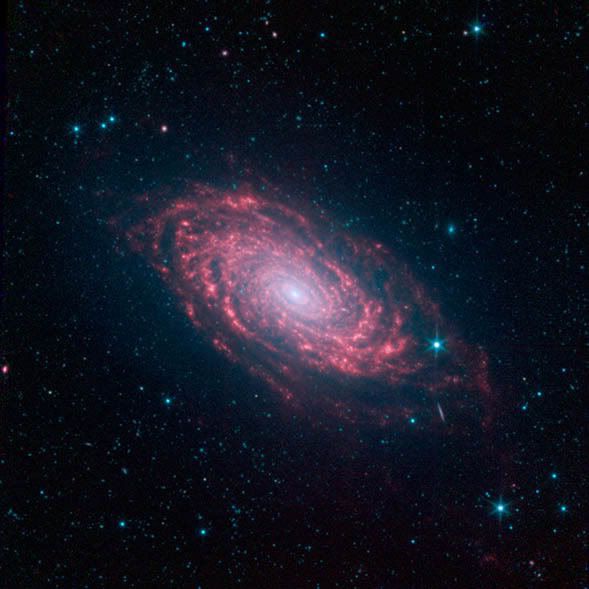

FSUViking
-
Content Count
479 -
Joined
-
Last visited
-
Days Won
4
Posts posted by FSUViking
-
-

The spiral arm segments of the Sunflower galaxy, 37 million light years away, also known as Messier 63, show up in this gorgeous image taken in infrared light by NASA's Spitzer Space Telescope. Infrared light is sensitive to the dust lanes in spiral galaxies, which appear dark in visible-light images. Spitzer's view reveals complex structures that trace the galaxy's spiral arm pattern.
The dust, glowing red in this image, can be traced all the way down into the galaxy's nucleus, forming a ring around the densest region of stars at its center. The dusty patches are where news stars are being born.
The short diagonal line seen on the lower right side of the galaxy's disk is actually a much more distant galaxy, oriented with its edge facing toward us.
-
Some awesome Hubble & Keppler shots of the universe. Simply...amazing.

The great grand-daddy of them all is the vast, sprawling Tarantula Nebula. Located 170,000 light years away in the Large Magellanic Cloud — a satellite galaxy to our Milky Way — it is churning out stars at a mind-numbing rate. Astronomers pointed Hubble into its heart (it’s far too big to be seen all at once by Hubble) and got quite an eye full: This area is a mess. The gas and dust are obvious enough, as are the great number of stars littering that volume of space. Quite a few of the stars you see there are newborns. But note the tendrils and filaments of gas to the left of center, and to a lesser extent to the upper right. Those are the shock-wave compressed sheets of gas from a supernova, a star that exploded right in the center of all that. A massive star must have formed here, lived out its short life, and detonated. The debris expanded at thousands of kilometers per second, slamming into and compressing the gas. It wouldn’t surprise me if this expanding debris helped collapse more gas at its outer edges, helping more stars get born.
It’s the circle of life, or I guess, in this case, it’s the spherical shell of life.
To say this region is vast is seriously underestimating it. Astronomers are actually arguing not that it’s forming stars, but that it may be forming a nascent globular cluster, a collection of hundreds of thousands or even million of stars!
-
Dude, Kyle Williams was an absolute FREAK this year.
So was Wilfork. Ask the NFL's leading tackler, Jerod Mayo, how good a season Vince Wilfork had.

OFFICIAL space & astronomy thread
in The Sideline
Posted
n this new image from the Hubble Space Telescope, you'll see a spectacular gamma ray burst and supernova as a bright point in the irregular galaxy located approximately 820 million light years from the Earth. An international team of researchers made the discovery using NASA's Swift satellite.
By analyzing the light spectra and measuring the so-called redshift the researchers could calculate the distance to the supernova, which was located in a galaxy 820 million light years from the Earth. It sounds extremely far away, but for astronomers it is a relatively near galaxy and that is a true delight.